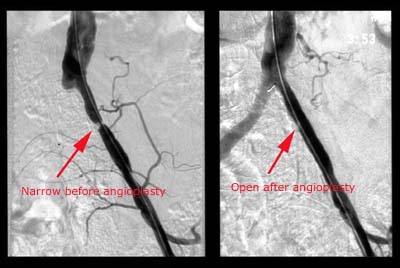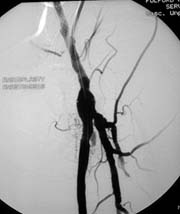[By David Krogh, author of the new book Smoking The Artificial Passion published by W.H. Freeman and Company, is a science writer and editor at the University of California]
===========================================
Almost everyone has watched someone try to quit smoking. They charge into the effort with optimism because of some new-found belief that hypnotism, nicotine gum or acupuncture will do the trick this time. They quit for a week or two, maybe even a few months, but then suddenly they're...smoking again. And, it's not just one cigarette here and there, their all-consuming habit has returned It's as if the whole effort to stop never took place.
Why does this happen? How can someone not choose whether to continue this strange ritual of inhalation and exhalation ? The mystery behind the inability to quit relates to the nature of the drug. Nicotine has almost no effect on a smoker that an onlooker can perceive. We believe we know why heroin is attractive: it makes people euphoric. In a slightly different way, the same thing is true of alcohol or cocaine. It would make sense that the more a drug does for us, the more alluring it would be. But if this is true, how can we explain nicotine, which hardly seems to have any noticeable effect and yet, to judge by its number of users, is easily the world's most addictive substance ?
Why Do People Smoke ?
To understand these contradictions we must drop our preconceived notions about what constitutes an attractive mental or physical state for most people.
Most of us believe, that drugs will be attractive in direct proportion to how euphoric they make us feel; but this is not the case. Jack Henningfield of the National Institute on Drug Abuse points out that if we gave heroin to 50 randomly selected people, most would get sick and would never want any again. We actually have a massive test-case that proves this every day: Thousands of hospital patients receive painkilling dependence-producing drugs in large quantities, yet almost none become serious drug abusers as a result.
It's clear that what makes a drug attractive is not only that people get high with it; but rather that people find it useful — perhaps for getting high, but also for other, less exotic reasons.
The important reason with nicotine is that the drug helps the user maintain his or her daily routine, especially at work. We have some telling information about smoking in the workplace. In the early 1970s, British researchers T.W. Meade and N.J. Wald asked some 3,600 workers to detail when they actually smoked cigarettes from the time they awoke until they went to bed. The results showed that these people smoked most of their cigarettes and had their two highest hourly rates of smoking while on the job.
So, what do people want from a drug ? To judge by this evidence, they want to be able to function. It is work, after all, that calls upon us to perform in a way that will keep a paycheck coming in. The work environment is likely to present us with situations that make us feel uncomfortable, abnormal. We may feel hammering tension from having too much to do or drowsiness and boredom from having too little to do.
The findings scientists have uncovered in the past 30 years regarding the effects of nicotine, depict a drug that is almost perfectly suited to returning people to a state which might be called psychological neutrality, no matter whether they have been removed from this state by stress or boredom.
Electroencephalograph studies show that nicotine generally arouses human beings. Give a subject a dose of nicotine and his brainwave activity will increase in frequency, a sign of increased arousal. However, we also have some evidence that nicotine sedates or depresses smokers, depending on the dosage and environment. (In general, larger doses of nicotine tend to sedate while smaller doses tend to arouse)
Consider that smokers may be able to move themselves up or down at will on a stimulation/sedation continuum by simply taking in a given amount of nicotine in a given situation. The ability to do this — and do it almost instantaneously — would obviously be a very attractive proposition for almost anyone. Is there little wonder that nicotine has found such favor in the workplace ?
Any drug that can function in such different ways might be expected to have varied effects when people actually perform tasks under its influence. This is just what we find with nicotine. There is evidence that people's physical reactions can actually speed up with nicotine. For example, non-smokers given nicotine can tap on a keyboard about five percent faster under its influence. Concentration during a long, boring task may also improve with nicotine. In one study, smokers and nonsmokers were asked to note pauses in the sweep hand of a clock. The smokers could maintain their vigilance remarkably well over an 80-minute test, while the nonsmokers' concentration steadily waned. We also have reason to believe that nicotine may moderate aggressive or anxious mood states. It may, in fact, have effects much like those of the milder tranquilizers.
These various research results cannot be regarded as conclusive. The idea that smoking provides absolute benefits in mental and emotional functioning has a number of critics. But, smoking research continues. Nevertheless, these findings do present a consistent picture of why nicotine is seemingly so attractive. Nicotine is the all-time addictive drug of choice because so many people use it in so many different ways.
More information can be found in http://www.oncologystat.com/cancer-types/lung-cancer.html
Nicotine has Deadly Addictive Power
Regardless of the smoker's perceived benefits from tobacco, one would assume that an overwhelming consideration must be the likelihood of an early grave after a life of gnawing addiction. However, the addictive qualities of nicotine often overpower a smoker's fear of premature death.
Thanks in large part to work done at the National Institute on Drug Abuse in the 1980s, it is now clear that all the elements of addiction found with "serious" drugs like heroin and cocaine are also found with nicotine. Smokers trying to quit are likely to become as psychologically distressed as the average psychiatric outpatient. In animal experiments, squirrel monkeys will press levers as many as 250 times to get a single intravenous dose of nicotine. Human smokers under the same conditions will dose themselves at orderly, predictable rates depending on how much nicotine they are getting — the very hallmark of an activity controlled by a substance.
People tend to think of nicotine addiction as a kind of lap-dog version of addiction — the real thing existing only with truly addictive substances, such as heroin or cocaine. The smokers everyone knows don't live in squalid crash-pads, rob people, or worse. How similar can heroin addiction and nicotine addiction be ?
Such reasoning ignores the fact that nicotine is legal and thus easily available at a low cost. Were this not the case, nicotine addicts might demonstrate all the depraved trappings of drug culture that we now see with harder drugs. Consider, for example, the account of a Mr. N.A. Photiades, who wrote to the Times of London in 1957, looking back on his experience in World War II :
I had the misfortune to be a prisoner for nearly four years during the war and found that the one thing that men were unable to give up was cigarette smoking. There was, in fact, a very active market in bartering the handful of rice we received daily for the two cigarettes our hosts so kindly gave us. I have actually seen men die of starvation because they had sold their food for cigarettes.
Such stories have been repeated at various intervals in history when tobacco has been unavailable or available only at the most prohibitive cost. The message from these accounts is: Whatever the cost of nicotine, people will pay it.
Given the probable benefits of nicotine and its addictive power, it's understandable why quitting is so difficult. Smoking works itself into every facet of waking life, essentially as an unhealthy means of relating to one's environment. It is a drug of physical dependence, as surely as cocaine or heroin.
Nicotine Addiction can be beaten
On the face of it, this would seem to present a forbidding set of circumstances for anyone who wants to quit. But while it is true that most individual attempts to quit smoking will end in failure, it is also true that 42 million Americans have quit smoking. Clearly it is possible, though quitting may take several attempts and some clever strategy.
This is important to keep in mind when trying to quit. It is a rare smoker who can stop for good on his or her first attempt. Smokers should not feel that there is something wrong with them — that they are more hooked or less resolute than others — if they don't succeed on the first go around. One must regard an unsuccessful attempt to quit as an exercise in getting to know one's habit. (i.e. When did temptations to smoke arise and when were they absent ?)
Nicotine gum or the new nicotine skin patch (both available by prescription) are useful tools in the quitting arsenal. Initial clinical trials on the nicotine patch look very promising. Nicotine gum, which has been around for years, lessens the early withdrawal symptoms smokers are likely to feel. Nicotine substitutes allow the quitter to conquer the habitual behavioral aspects of smoking before dealing with the physical symptoms of withdrawal.
Another piece of advice : People trying to quit should stay away from people who smoke. Nearly three quarters of all quitters who relapse do so in the presence of people who are smoking — usually after having asked one of these people for a cigarette.
Finally, smokers who want to quit should attempt to develop a repertoire of coping strategies as the research literature phrases it. Saul Shiffman, perhaps the nation's leading expert on smoking relapse, has found that people who develop such strategies are far less likely to relapse in a given "crisis" than those who don't. Such strategies can be divided into the "cognitive" and "behavioral". They involve "thinking" or "doing" something specific to overcome those moments when the ex-smoker really craves a cigarette. Thinking: about the effort you've invested so far; about how much your kids will benefit; about your uncle who died from emphysema. Doing: Getting up and leaving a bar; going out for a walk; sitting down to play with a video game.
Even the person who mixes and matches these and other strategies is not likely to find quitting easy. Smoking is a tenacious habit precisely because it is so intimately tied to the everyday acts in our lives. Nevertheless, with determination and a smart strategy, it is possible to quit smoking.

















